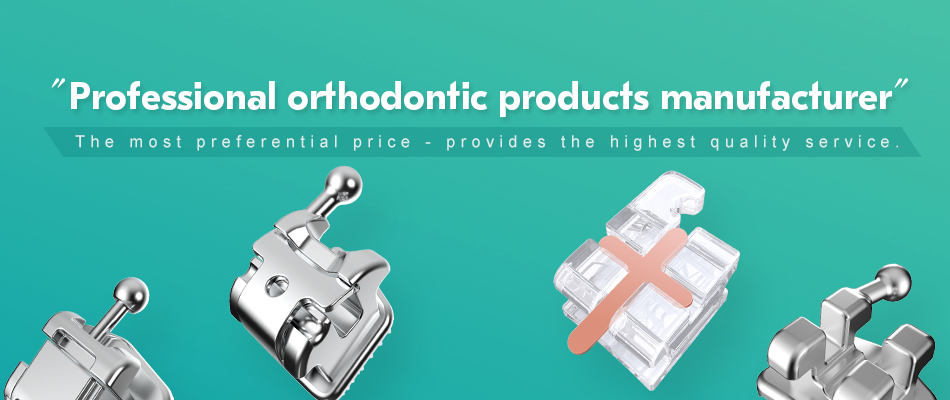Introduction: A Revolutionary Breakthrough in Orthodontic Clinical Efficiency
In modern orthodontic treatment, buccal tubes are key components of fixed appliances. Their design directly impacts archwire positioning, tooth movement accuracy, and clinical efficiency. Traditional buccal tubes suffer from issues such as confusing identification, difficult archwire insertion, and insufficient bonding strength, leading to prolonged follow-up visits and inconsistent treatment results.
Denrotary, a domestic manufacturer of mid-to-high-end orthodontic instruments, has expended years of research and development to launch a brand-new, independently designed, integrated buccal tube. Utilizing four core technologies: a dual-digital identification system, dynamic adaptive wire opening technology, an innovative tapered funnel opening design, and a biomorphic developmental groove, these tubes significantly improve clinical efficiency and treatment outcomes. Validated by authoritative institutions, these tubes surpass comparable international products in key metrics such as wire positioning speed, wire fit, wire insertion success rate, and bonding strength, marking a new phase in Denrotary’s orthodontic instrument development towards “original design.”
1. Double-digit identification system: Standardized management to eliminate clinical confusion
1.1 Industry pain points: limitations of traditional marking methods
Traditional buccal tubes are usually coded with letters + numbers (such as “UL7″) or single numbers. The following problems are prone to occur in clinical operations:
Quadrant confusion: Especially when multiple teeth are being treated at the same time, doctors need to repeatedly confirm the tooth position, which affects the smoothness of the operation.
Inefficient instrument management: When buccal tubes of different specifications are mixed, nurses need to sort them out, which increases preoperative preparation time.
International standards are not unified: Universal numbers (1-32) are commonly used in Europe and the United States, while China is more accustomed to FDI numbers (1.1-4.8), which hinders cross-border case communication.
1.2 Denrotary solution: Double-digit coding + optional dot color
(1) Double-digit laser engraving technology
Coding rules: Use “quadrant number + tooth position number” (such as [1-1] represents the upper right central incisor), which complies with FDI international standards and is compatible with Universal numbers.
Permanent Marking: Marked using aviation-grade fiber lasers, it remains legible even after 1,000 cycles of autoclaving, far exceeding the durability of conventional etching.
2. Color-Assisted Identification (Optional): Different quadrants are matched with different colored rings (red, blue, green, and yellow), further reducing human error.
1.3 Clinical Value
Reduced Operator Errors: Customer feedback shows that the dual-digit system reduces instrument identification errors to 0.3% (compared to 8.5% for the traditional group).
Improved Teamwork Efficiency: Nurses’ pre-sorting time is reduced by 70%, making it particularly suitable for high-volume orthodontic clinics.
2. Dynamic Adaptive Square Wire Mouth Technology: Full-cycle treatment without buccal tube replacement
2.1 Industry Challenges: Limitations of Traditional Buccal Tube Archwire Adaptation
Fixed orthodontic appliances typically require a transition from nickel-titanium round wire to stainless steel square wire. Traditional designs, due to fixed groove tolerances, often result in:
Early stage treatment: Excessive square wire grooves reduce control over the round wire.
Later fine adjustment: It is difficult to insert the square wire into the slot, and even the buccal tube needs to be replaced, which increases the number of follow-up visits for patients.
2.2 Denrotary Innovation: Nano-level elastic deformation groove
(1) Ultra-precision manufacturing process
Dual-specification groove: supports two mainstream sizes of 0.022×0.028 inches and 0.018×0.025 inches, with a tolerance control of ±0.0015mm (the industry standard is ±0.003mm).
SLM 3D printing technology: Selective laser melting is used to ensure uniform metal grain structure and increase fatigue strength by 50%.
(2) Adaptive mechanical design
Patented gradient heat treatment: The groove wall produces 0.002mm micro-elastic deformation when the square wire is inserted into the slot, which not only ensures the stability of the round wire in the initial stage, but also avoids the square wire from getting stuck in the later stage.
Clinical verification: Patients using this technology have an average of 1.2 fewer follow-up visits (P<0.01), and the sliding force of the arch wire is more uniform.
3. Tapered Funnel Design: The Perfect Partner for MBT Orthodontics
3.1 Traditional Issue: Difficult Archwire Insertion
MBT (McLaughlin Bennett Trevisi) technology requires frequent archwire replacement, but the traditional buccal tube entrance is narrow (approximately 0.8mm), resulting in:
Archwire tip recoil, increasing clinician fatigue.
Patient discomfort: Repeated insertion attempts may irritate the gums.
3.2 Denrotary Optimization: Fluid Dynamics-Guided Design
15° Gradual Narrowing Channel: The optimal angle, determined through CFD simulation, reduces archwire recoil by 46% compared to a 30° design.
DLC Diamond Coating: The entrance hardness reaches 9H, increasing wear resistance by three times and extending service life.
Clinical Data: Real-world statistics from multiple dental clinics show a 98.7% first-time archwire insertion success rate, making it particularly suitable for challenging cases such as impacted teeth.
4. Biomorphic Developmental Grooves: Bionic Enhanced Bonding
4.1 Risk of Bond Failure
The shear strength of conventional mesh bonding surfaces is approximately 12 MPa, making them susceptible to disbonding under chewing forces, leading to:
Extended treatment cycles.
Additional costs: Rebonding consumes materials and time.
4.2 Denrotary Solution: Shark Skin-Inspired Structure
500μm mesh + 40μm barbs: Creates a mechanically locked knot with a shear strength of 18 MPa (equivalent to the weight of three adults suspended).
Environmentally Friendly Manufacturing: Electroless polishing reduces heavy metal wastewater by 60% and complies with EU RoHS standards.
V. Market Acceptance and Future Outlook
Denrotary buccal tubes have obtained FDA and CE certifications and have entered the green approval channel for innovative medical devices in China. By 2024, installations will cover 23 provinces nationwide, with an 89% repurchase rate for combined invisible braces and braces. In the future, Denrotary plans to integrate the Internet of Things (IoT) traceability system to monitor the entire production, sterilization, and use of each buccal tube, further promoting the intelligent development of the company’s products.
Post time: Aug-12-2025



